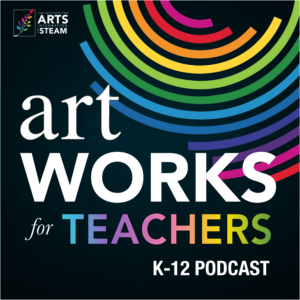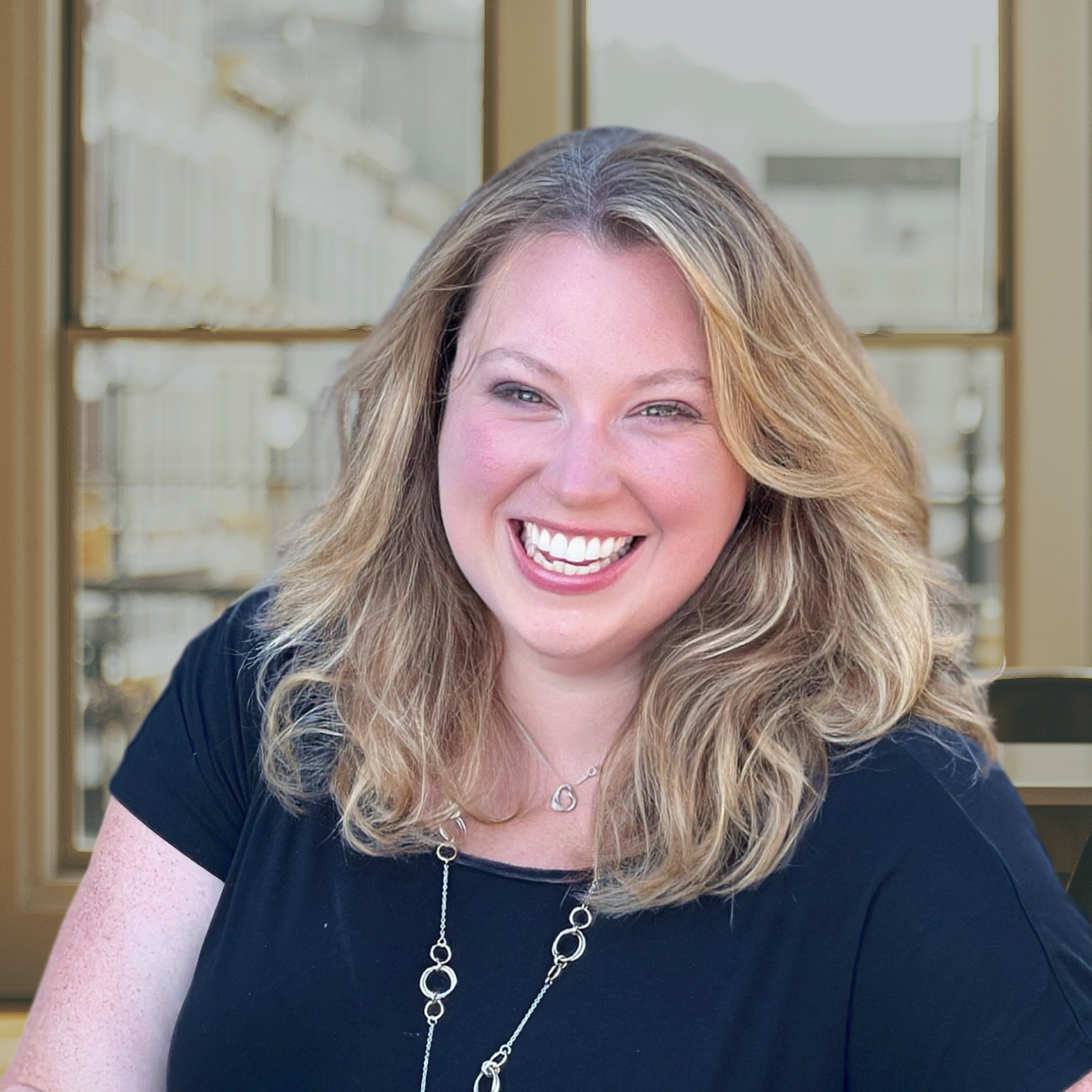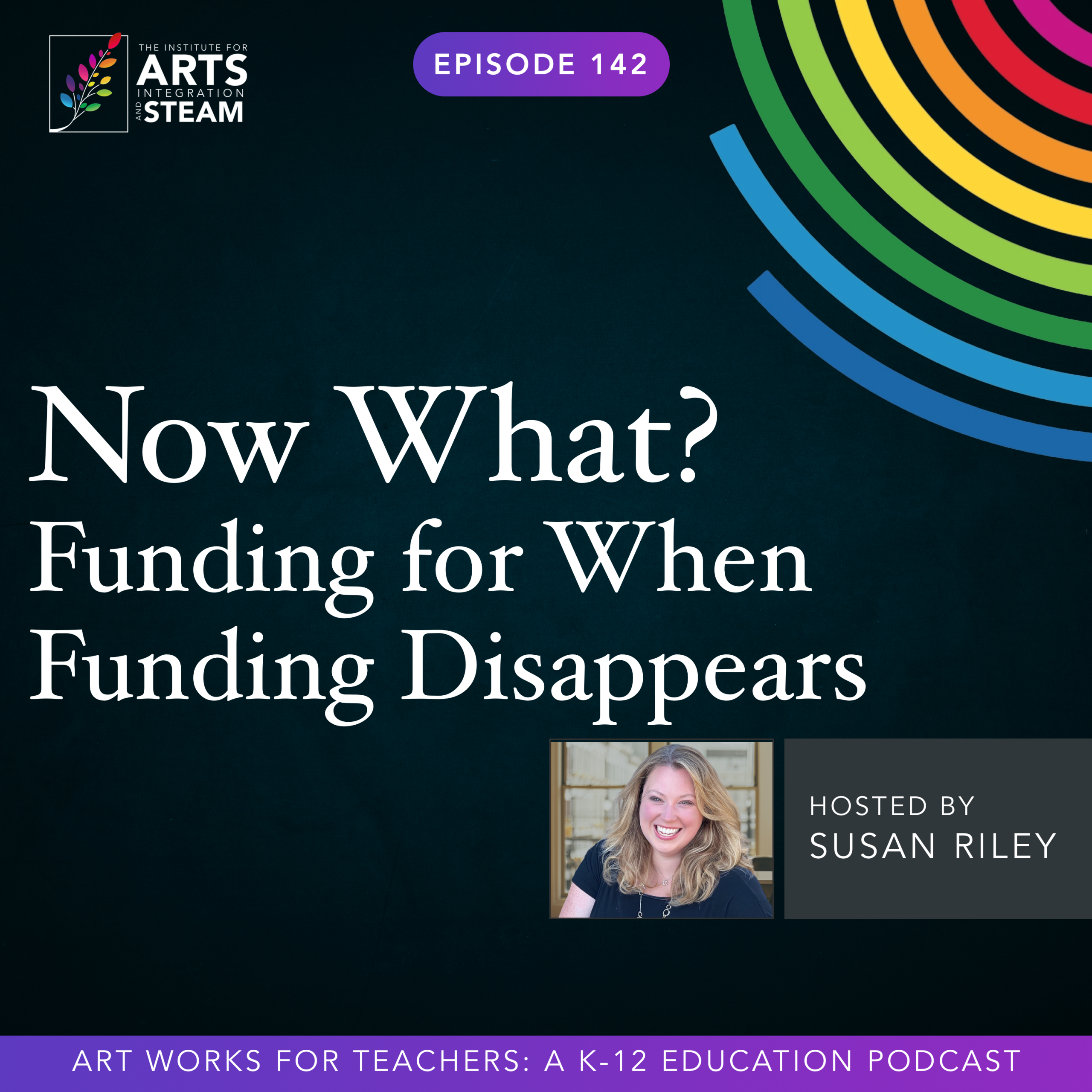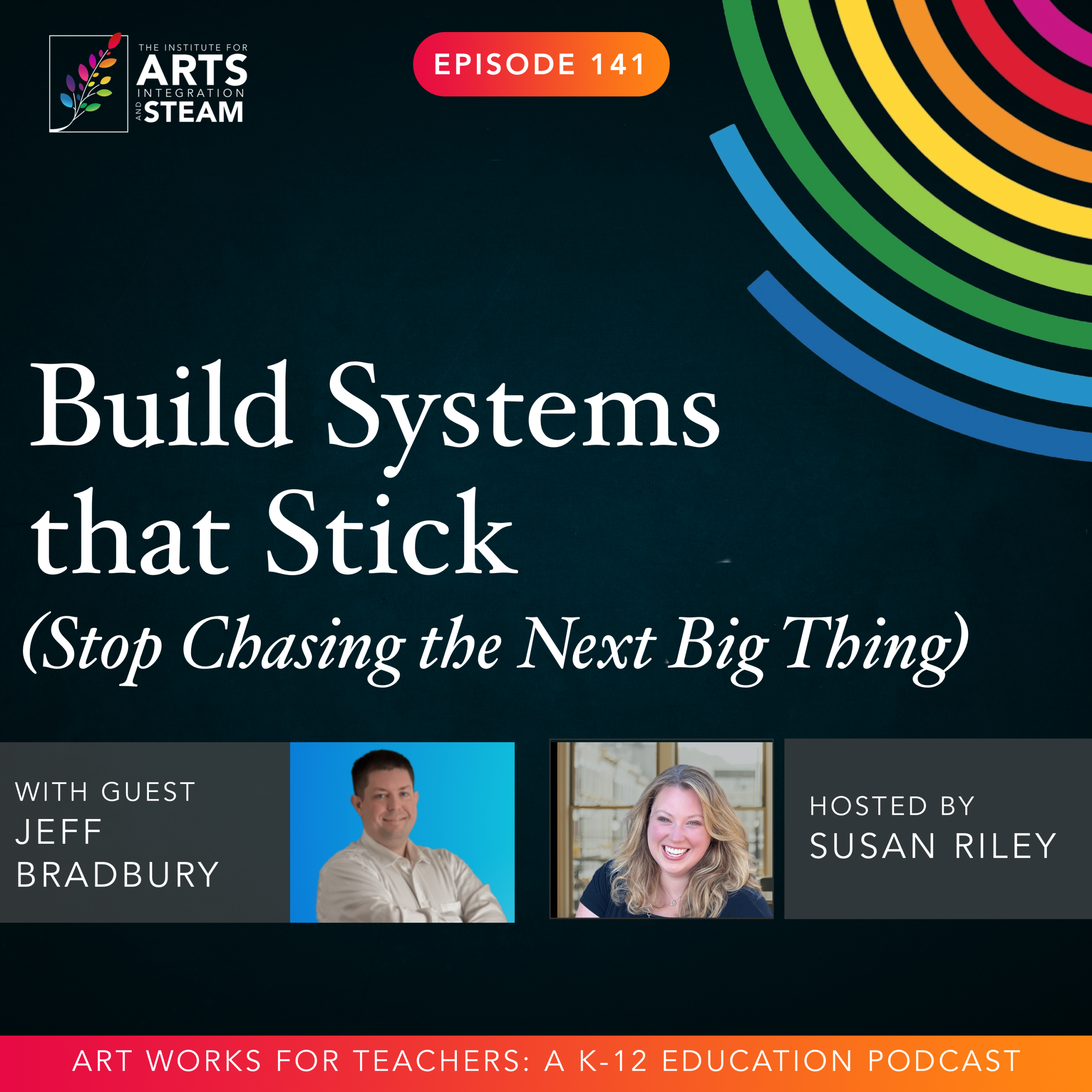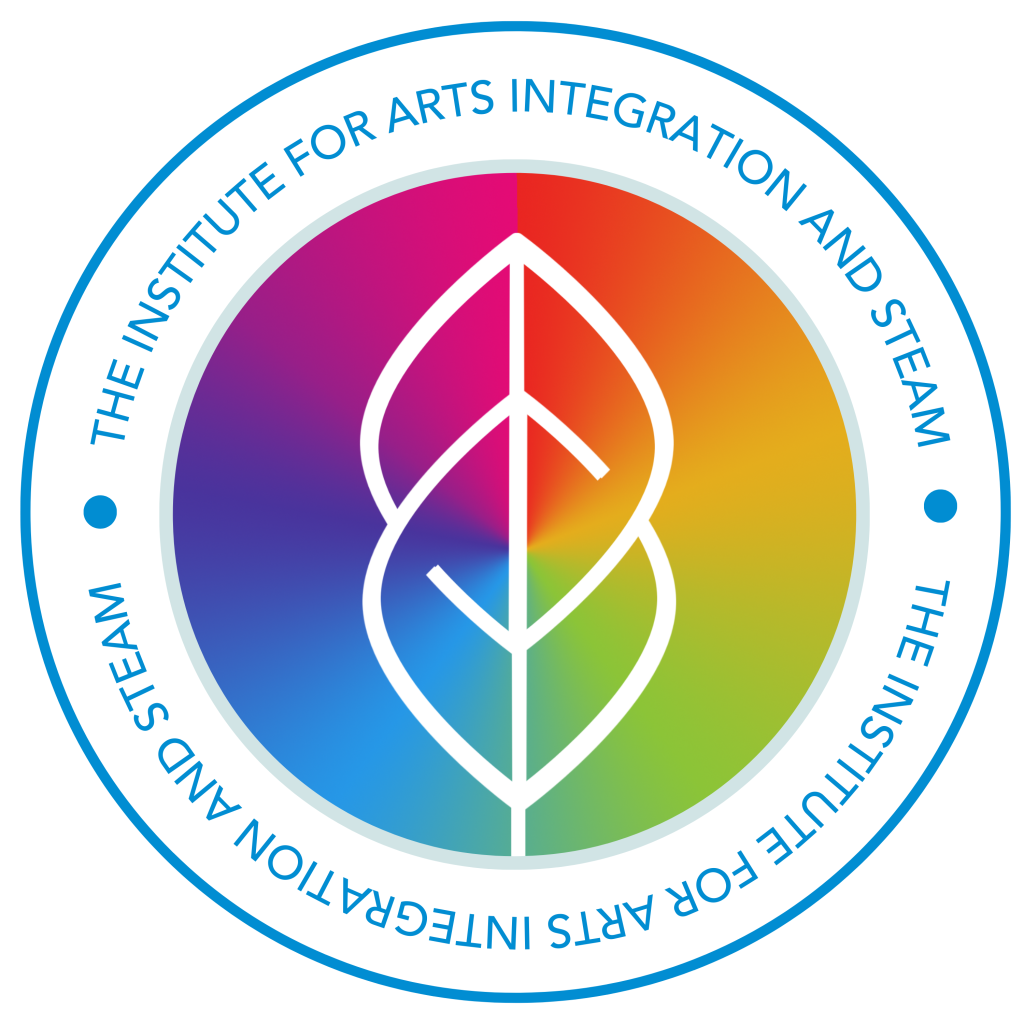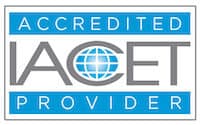ART WORKS FOR TEACHERS PODCAST | EPISODE 094 | 32:23 MIN
Leading Schools in a New Era: Engaging Today’s Students
Is your classroom full of disengaged students? Dr. PJ Caposey, school leader extraordinaire, joins us to discuss the challenges of educating today’s students and creating a thriving school culture. Learn how to build relationships, develop engaging lessons, and empower your teachers to become leaders! Don’t miss this episode!
Resource Download
Enjoy this free download of the Building a Positive School Culture through Collaboration resource.
All right, well, welcome, PJ. Thank you so much for joining us on the show today.
PJ
I’m excited to be here, thank you.
Susan
Awesome. So to get started, can you share a little bit about yourself with our audience, what moved you into school leadership, and what you’re passionate about today?
PJ
Absolutely. So I’m currently the superintendent of two school districts, which is kind of an interesting thing to be going through and two districts that don’t share boundaries. So sometimes this happens where there’s an elementary and a high school and someone’s a superintendent of both. So I’m currently serving as superintendent of two districts in two different communities. And it’s, it’s busy. It’s busy. And I’m loving it. I’m loving it, but it’s, it’s busy.
Susan
Yeah, well, and how does exactly does that happen? Because I don’t know that I’ve ever heard that they’re, especially if they’re not sharing boundaries, how and how you can lead to totally different
PJ
So I was in Meridian, which was for 11 years and had an incredible experience there. We’ve had lots of success, national recognition. launched my career in more ways than I can imagine and I decided to move on to a different district at the end of my 11th year, but made the decision like in the middle of my 10th, which was kind of this really advanced timeline. And I was just going to move on because my kids and my wife, my kids go to and my wife teaches in the district where we live.
And so their superintendent was retiring and it just was kind of like coming home. And I was, I was formerly high school principal there. So it was all of the things, right? And so we announced this transition plan and it looked beautiful on paper and it was about two years long. And we hired my replacement in Meridian and hired him a year early. So we had this full year kind of understudy thing going on. and he decided it just was not for him, for a variety of reasons toward the end of last school year, so like toward late May, which didn’t give the district time to kind of go out and do the search process. And now we have me leading two districts.
Susan
Well, that has got to bring a lot of different challenges with it than maybe you were anticipating, but maybe lots of opportunities for growth too,
PJ
It’s been really, cool the last few weeks. May and June were difficult, but I still haven’t found a rhythm. I guess what I’m seeking at this point is rhythm.
But I’m definitely not drowning anymore if that makes sense. So I feel like I’m swimming but like I definitely don’t have rhythm yet. So I just keep telling myself I think by Labor Day, right? Kids will be back in school for a couple weeks. So I’m hoping by Labor Day there’s a rhythm and then we’ll figure it out.
Susan
Yeah, of course. And then maybe by Christmas. That’s how leadership goes. That’s right. That’s right. So I wanted to bring you on the show because you have a great book out all about coaching and using the Enneagram. But before we get there, I would really love to lay some groundwork for folks who maybe are not familiar with your work. And you have so many wonderful posts on Edutopia and in whatever we’re calling Twitter these days. So I would love to start with some of those topics that you’ve written about previously before we head into your book. So one of the things that I think is most relevant right now is teachers seeing student apathy causing them a lot of difficulties. And I know you’ve talked about this with seeing more severe behavior issues, dealing with student apathy.
So let’s get beyond some textbook theory. What are some real world ways that administrators can support their teachers in this specific
PJ
So I think it’s a really, like it’s a razor thin margin as to kind of having a bipolar approach to this. One is acknowledging 100 % that kids are fundamentally and foundationally different than perhaps they even were four years ago, let alone 14 or four generations ago. So we have societal constructs that are pushing that. So I think that’s one to acknowledge that. But then, secondarily, also pushing on the adults that have chosen to serve children as their profession, that even though the kids are different, it doesn’t forgive us of any of our responsibilities to care for, to love, and to challenge those same kids. So it’s really interesting dialogue of, yes, like we can acknowledge and appreciate, but I also don’t love staying in a place where I’m admiring a problem and not necessarily working toward a solution.
And if we don’t think the kids are going to change, then the only option for us to get better outcomes is literally for us to change. And so my focus largely becomes on trying to be caring and understanding of my staff and what they’re going through. And truly, as someone who’s
I’ve got four kids between 10 and 18. So I know, I get it in more ways than you can possibly imagine that kids are fundamentally a little bit different and there’s just, whether it be societal or generational, however we want to type it, those differences exist. But at the end of the day, we are the ones that have chosen to try to make a difference in these kids’ lives and therefore we have to adapt as opposed to waiting for them to change back to the kids of the 70s, the 80s and the 90s.
Susan
Yeah, so what are some ways that we can do that adaptation?
PJ
So don’t think, like as much as kids are different, I think that fundamentally they’re the same, right? When they’re cared for and challenged, I think kids can thrive. And I don’t think that has shifted. I think that’s part of our evolutionary DNA, right? Like I don’t think that’s gonna shift depending on, regardless of what tech tool or, you know, virus or crisis or whatever comes around. I think as long as kids know that you care for them and as long as you’re challenging them and when I say challenging them,
I’m talking about asking them and requiring them and mandating that they actually use critical thinking skills to push them forward. I think kids will, at minimum, engage. But if we’re expect… We are never going to be as interesting as YouTube.
Like so like like if we can just fundamentally understand that what is in their pocket or on their screen at all times is going to be more interesting than we are just having a conversation then we have to figure out ways to make our classrooms our school environments and ourselves a little bit more interesting and force them to evolve their thinking because there’s nothing the brain likes more, whether it’s the teen brain or the adult brain, to think and to think about thinking. And so we just have to allow them the ability to do so. And that’s a lot different than copying definitions down or whatever it is that could be wrote because what they are immediately thinking is there’s a tool that could do this for me. It is a waste of time. The one thing nobody can do for them is think. And so we just have to continue to allow ourselves to have the confidence, which I think is regardless of where the conversation goes or how far we push their thinking, that we have the confidence to bring it back and to get to whatever salient point that we want to accomplish in the classroom.
Susan
Yeah, absolutely. My staff and I talk about this a lot when we go out and visit schools, and I’d love your opinion on it as well, because you’re in it, in the ground level with your teachers. So we constantly talk about the fact that classroom management, good classroom management, still is good classroom management, regardless of whether it was from before COVID, after COVID, whatever, and that the foundation of good classroom management is building relationships with students, right?
Building trust, building relationships, and knowing who your students are, and then adapting your instruction to meet where those students are. And so for us, while teachers keep saying, kids are different, kids are different, kids are different, but to your point, our staff keeps saying, well, but good classroom management is the same. Do you feel the same way, or do you feel like classroom management also has to evolve and adapt to make accommodations for who students are now?
PJ Caposey
So 90%, I would agree, but I will say as someone who gives a lot of opening day addresses, there’s no quicker way to lose a teacher audience than to tell them to build relationships. Like it’s an immediate eye roll for all of them. So if teachers are listening now, like I’m not doing that, but it is true, right? Like foundationally, the experience I always go back to the entirety of my teaching career was in Chicago public schools. And the school that I taught at, we had, eight students die violent deaths my last year and seven percent of our kids meet standards. So when I’m talking about as dramatic and as difficult of a student in school environment as you can imagine, like I that’s it right? And I would love to tell you that I had great classroom management. I think I had okay but like it was certainly possible. Many of my colleagues had great classroom management. So when we’re looking at some angsty suburban kids sometimes be like, these kids are so difficult. Like, well, maybe, right? Like maybe, but like there are other teachers, other places getting it done. And that means that you can get it done too. And I don’t think a lot of it has shifted. I do think some of the demand has shifted, right? I think we do have a more distracted population, maybe not as disrespectful, sometimes disrespectful too,
But we have a constantly distracted population. Because face it, we’re constantly distracted too. I mean, since I’ve been talking to you, my phone has vibrated three times. And as much as I’m concentrating on our conversation, maybe I’ve thought about who might have been digging me, right? Like, is it one of my bosses? Is it my wife? Whatever the case is. And that’s what I would like to think mature 43 -year -old brains. And I’ll put that in an immature 15 -year -old brain and where they go. I do think fundamentally they are more distracted. But I still think all the foundational principles, back to Wong and whoever other researchers there are, right? Like are still the foundational principles of building solid, solid classroom
Susan
So I’m kind of want to get your opinion on how we can build a little bit more of a healthy respect and dialogue moving into this direction with the environment that we’re currently in, which, you know, in a world that’s incredibly politicized and divided right now, there’s a lot of difficulty when it comes to having respectful conversation and healthy dialogue of both agreeance and disagreeance.
From a leader’s standpoint, how can you be champions for teachers and build a healthy culture of respect and dialogue in your schools?
PJ
So I think, I mean, do you me specifically to focus on the dialogue within the schools or the dialogue in the community about the schools?
Susan
I would love a little bit of both if you wouldn’t mind. Start with the first one and then move into the community aspect. I think it’s both helpful.
PJ
So I think there’s no greater way to alienate teachers and to extinguish productive conversation than to ask for feedback and then never listen to it or use it. Right. So as leaders like our number one job is to to listen right into doesn’t mean have to do everything that is suggestion. I’m not even saying like I don’t know that schools would run well as a democracy. There’s a there’s a reason leaders are put into place to run things but engaging in meaningful conversation matters. But I’ll go back to the same thing we kind of said about teachers and kids. Whenever I’ve worked with a staff that sincerely believes that the leader really wants them to grow and is cares for them and is investing in them, they will give that leader a of benefit of doubt, right? when things get hard is, so and I even think about that at personal level, when I really think someone has my best interest in mind and has invested their time, effort and energy into me, I can put up with a lot, right? And so I think what has happened is, and I think we can look, and I think there’s a clear dividing line here with the pandemic that our leaders became managers and just trying to keep the roof on the place and make sure all the mandates and protocols are followed. And as a result, what we quit doing was investing in our staff and quit letting them know that our number one job is to support their growth in whatever we do. And so as soon as teachers don’t feel supported, as soon as teachers don’t feel someone is investing in their growth, then everything that comes out of the leader’s mouth is just another to do, another to do without clear rationale, without a clear why, without a clear purpose.
And so with all the principles and leaders that I’m coaching this year, the emphasis is largely the same. We have to get back to leading. We have to get back to investing in the people that we serve and growing them. There’s so like, when you talk about trust, like trust to me is about character and about competence. And the number one way that we can show both character and competence is by investing in the people that we get the privilege of leading by helping them continue to grow.
PJ
So that’s on the inside. From the outside in, I don’t think like things have changed in terms of like, think schools have always, there’s always been an issue. The issue now is that I think a lot of people don’t like and don’t trust government. And we are the closest thing they have to government. And so we get a lot of the vitriol that would normally be pointed in some other direction and it just happens to come upon us. So the two things that I always go, that go through my head and that I encourage our teachers to remember is number one, there’s a silent majority of people that really, really respect and appreciate what you’re doing. So don’t let the very loud minority of people confuse that, right? So that’s number one. Number two, excuse the little negative, but it’s with every criticism, there’s usually a kernel of truth. So can we have the self -awareness and the confidence to listen to sometimes some really ill -packaged critique and to sort through that and be like, you know what, maybe, maybe there is something that I need to think deeper on to continue to grow as an educator, as a leader on this to better serve kids in the community.
Susan
Yeah, I think that’s so important. And I think that you hit the nail on the head in terms of what people have access to, right? And where they can take some of their frustrations and understanding that before taking it personally, right? Don’t take anything personally. You just accept it for what it is. And then lastly, what are some tools for creating a little bit more time this year? As we’re headed into a new school year, there’s so much possibility at the beginning of the year, you know, it’s like packaging it at the, when you open up a package at the holidays and you’re like, my gosh, what’s inside? It’s kind of like that at back to school season for teachers. We just finished up a big conference event and so many teachers are excited, but there’s this little kernel in some of the feedback from the event that’s like, I would love to do this, but I don’t feel like I have time. I don’t feel like my administrator would allow me the time to try that or to explore project -based learning or arts integration or differentiated instruction in a new way. So as an administrator, what are some ways that other administrators can support their teachers in using research -based initiatives that could really impact student achievement this year?
PJ
So you’re get me in trouble with this question. So let me couch my answer by saying this. I think that we have the best and most important jobs in the world. And I mean that sincerely. I wouldn’t have dedicated my life to it if I didn’t believe it. But on a daily basis, I think we dramatically overvalue what we do every single day. To the point where like, I can’t take this out even if I really want to add that because this is
And whatever that so is, is probably just not accurate, right? and so if we think back to our own schooling careers, there’s a handful of magical moments that stick out in our heads. So like for me, I remember like very foundationally as a freshman reading a separate piece and having a male English teacher read a male dominated novel to the class and helped me work through and just ignited a love of reading, right? Those moments are there for us to take and to create. And sometimes we just have to forgive ourselves some of the typical status quo stuff that we’ve had in for years or aligned to a particular standard. We’re not gonna ever hit all the standards. We know that, like there’s been abundant research on it. Marzano’s been the champion of that research. So if we know we’re not gonna hit all of it, let’s do the things that are gonna create moments for kids.
Because when they look back, it’s not going to be that, yeah, we grinded through unit two, even though the teacher hated it and I hated it. It’s going to be like, my gosh, do you remember that time we did this? And if we have the opportunity to create that, I just implore you to give yourself the permission to take the risk.
Susan
Yeah, yeah, absolutely. And it’s kind of like one of those things like shut the door and just do it. Do what’s best for kids, right? Yeah.
PJ
100%, I have confidence in it. We want, so I’ve been working with a lot of districts doing different consulting things and for me it’s very interesting because when I meet with the community and do some like community strategic planning stuff, the community doesn’t, for the most part, hasn’t, I shouldn’t say doesn’t, has not in my experience cared about what the school report card says as much as they care about the experience their child has.
And so if a student has an incredible experience,
There’s not a single data point that you could give a parent to say that that school is not effective. Whereas, if a student doesn’t have a great experience, there’s still not a single data point you could give them to prove that their experience was great. we just please don’t discount that they’re human beings, the people they talk to are human beings. If we create these incredibly powerful moments of learning and experience and of creativity for kids, they’re going to remember it forever. And that’s how they’re going to remember experience and whether 78 % of kids met standard or 72 met standard on the standardized test, I don’t know that people are going to remember that and I don’t think people are talking about that in their college dorm rooms. I don’t think people are talking about that at their 20 -year reunion.
Susan
Right, absolutely. So I want to shift into your new book, The Cracking the Coaching Code. I’m so thrilled about this book because it uses the Enneagram, which I’ve talked on this show about the Enneagram before, but I think the way that you use it in terms of approaching coaching is so innovative. And so I’m curious why this book and why this topic with your current seat.
PJ
So, we’ve used Enneagram in our district for about a decade pretty diligently. I exposed the district to it about 12 years ago but there’s no takers and I didn’t want to force it. And then it slowly gained momentum and now it’s a thing we do. So I think Enneagram is one of those things where it has to kind of be a slow roll where people want it, you can’t necessarily force it onto people. So it’s been a backbone of what we’ve done. It’s been near and to my heart. It helped me a lot grow as a leader and helped me a lot as a husband to be a better husband to my wife. So that set for a long time.
But I do exit interviews with each of our seniors each year just to say, hey, did we do a good job by you? So like the thing I just talked about, like, hey, student experience, that’s not just me talking like in consultant lingo. I’m having those conversations with kids and they’ll tell you if you did a good job by them. And one of the questions I ask them all each year is who’s had the greatest impact on you? And disproportionately that answer is coaches. And I would love to tell you that that is always positive, but sometimes that’s negative because we don’t say who’s had the best impact on you. Who’s had the greatest amount of impact on your on your schooling experience. And I started thinking to myself and as a college athlete and someone who, know, like so sports have been important to me, but we do nothing to develop our coaches. And as someone who thinks in systems and believes in trying to make sure that our priorities align with how we’re developing things.
Essentially, it’s like, hey, a lot of times like, hey, you might have played a college sport or you like it and you aren’t a sex offender. So here’s the keys, right? Like go, go help our kids be in their most vulnerable state. And that’s largely what we do as a school system. And so I started looking and there’s a handful of organizations that do nice work for professional development for coaches, but it’s certainly not universal and schools don’t think about it holistically. And so we started thinking about what if we combined this thing that we now know is a not only a market gap in terms of like from the economic standpoint, but just a systematic gap in terms of what we do in schools with this thing that we’re already really passionate about and believe in with Enneagram. And that’s how the origin of the book.
Susan
That’s amazing, because when I was reading it, I was thinking, yes, this applies to coaches, and I think it’s amazing. But also, as I’m reading, I’m thinking, this applies to teachers. This applies to anyone who is working with another human in any capacity, truly. I mean, and that’s really what the Enneagram is great at, right? Is helping us understand fundamentally ourselves, but also how we relate with others and how others relate with us. So
I’m curious from your perspective and how you’ve used it both with coaches and in your district. How can the Enneagram help us explore our relationships in both of those capacities?
PJ
So the way that I have found the most traction with it is so I tried to take a very Covey like approach to it and I believe I have personally and I’d like that to be what happened in the district but it necessarily hasn’t rolled out. And the Covey like is that private victory before public victory right. We’re to work on ourselves get to understand ourselves better so we have a greater impact. But what really happened is we had some conflicts we couldn’t get through between teams of teachers and
They had heard us talk about Enneagram as a leadership team and we have used it and used it extensively in my growth and coaching opportunities that I have with my principals and leaders. And they’re like, hey, can we try this? And it gave them a language through which they could work through their problems and help to understand why certain behaviors were so triggering for certain people and why people were so predisposed to doing those same annoying behaviors over and over again. And they started to have a conversation. And then we went from one of our lower performing teams to one of our higher performing teams and they told everyone and then it just exploded in the district. So I would love to tell you like it was this really thoughtful approach of like everyone just took a year to internalize it and then it wasn’t. We had a conflict among a group of teachers. It helped solve the conflict. They told their friends and now it became what we what we do with our coaches. It’s it’s still part of a slow roll, right? Because what happens very quickly is that as soon as someone gets exposed to any gram is they want to type everyone around and like I admit, like it’s hard not to do, right? But what is happening is we have coaches with a lack of depth of knowledge of the tool. Like they just have exposure level knowledge and they’re used to seeing kids under stress, right? Like part of what a coach does is put kids under stress. So at first we had a lot of mistyping of athletes because they’re seeing version A, which is not the person that they are necessarily authentically wholly the words that we use in the book letter when they’re on autopilot or default. They’re seeing them under stress. And so it’s been a slow roll in trying to get the coaches to go slow, to go fast with it, because it’s hard when you get it, like Enneagram is one of those things, and our brain loves learning about our brain, right? But as soon as you get into it, you want to explode with it. And sometimes it’s, it truly is a slow burn. So we are still like in the iteration phase of getting it a little bit more throughout what we do and having it be a little bit more appropriately used, I would say, culturally. Now, all that saying like, I’m not where we want us to be, but I have coaches thinking about their self -awareness and thinking about the response to direction given to, from them to students and then having really reflective conversations how they can do that better. So it’s a massive win, right? Like, so we’re way ahead of where we would want to be, but still, you know, I’m wired to want to get it right and I don’t know that we’re quite right yet.
Susan
It’s a journey, right? As with anything else, it’s a journey. So if there’s, I want to honor your time. So I wonder if there’s one thing that you could let other leaders know, if there’s one thing about leadership and leading, what would it
PJ
For me, I’ll give two things. Number one, the essence of leadership for me is self -awareness, right? So the more that you understand who you are, why you behave in certain ways, and the impact that you have on others because of your behaviors, I think the greater chance that you have at success. And the second thing that I would add, which is I just kind of dovetails directly into it,
The job of leaders is to create leaders. there’s nothing that is more important to me than if at the end of the day, people will say that I had some iota of positive impact on their growth as a human being or as a leader. And so a lot of times we get caught up in chasing metrics and like I’m a firm believer if we do the right things for the right reasons in the right way we’re gonna get outcomes. And our jobs as leaders if you’re privileged and lucky enough to have that title is to serve others and to help them grow not just kind of robotically chase outcomes.
Susan
Yeah, I love that servant leadership aspect. Wonderful. So where can people learn more about you and get in touch and grab that
PJ
Yeah, so I thank you for the promotion. It’s on Amazon. We’re really happy. When it first released on Amazon, we got to the second bestseller. We beat Schwarzenegger’s book when it was out at first, so we’re pretty pumped about that. So yeah, I’ve got that screen -shotted and saved in the office. But you can find it on Amazon, Barnes & Noble, all the places that you would normally find the book, Cracking the Coaching Code. I am everywhere on social media, at MCUSDSoup, and my website is www.pjcaposey.com and that’s the easiest place to get a hold of me for speak engagements, consulting, et cetera.
Susan
Fantastic, and we’ll put all of that in our show notes for today. Thank you so much for your wisdom and for sharing such wonderful ideas with our audience today. I really appreciate
PJ
Awesome time, Susan. Thank you.


